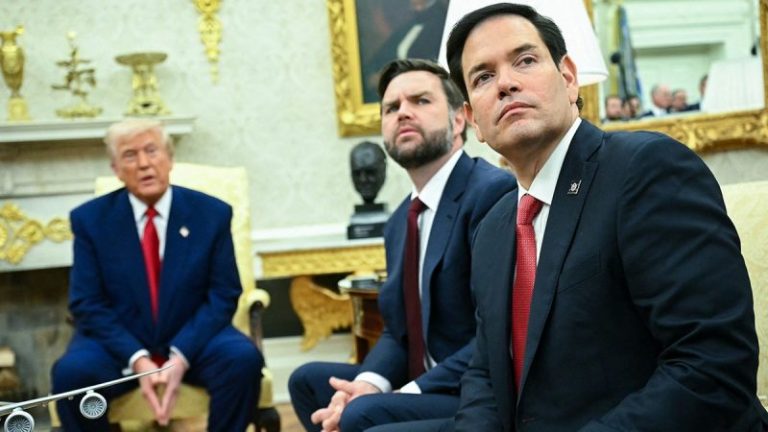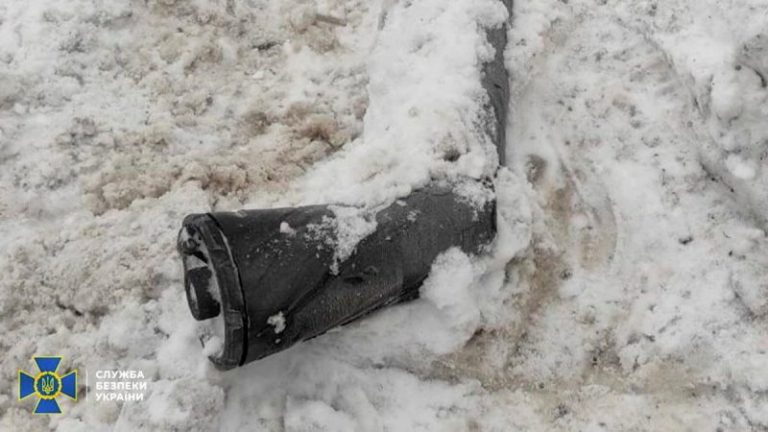The U.S. seizure of the tanker formerly known as Bella I marks a rare escalation in sanctions enforcement against Russia’s so-called ‘dark fleet,’ but experts say the move is unlikely to trigger a broader confrontation with Moscow, at least in the near term.
Analysts largely agree that the interdiction — one of the most direct U.S. actions against a vessel Russia claims was operating under its flag — comes at a moment when the Kremlin has limited appetite for escalation outside Europe and is focused primarily on its war against neighboring Ukraine.
‘This is unique,’ said Brent Sadler, senior research fellow at the Washington conservative Heritage Foundation think tank.
The U.S. rarely boards foreign-flagged vessels on the high seas unless the ship’s nationality is in doubt, which he said was the case here due to rapid reflagging and a pattern of sanctions violations.
Peter Rough, a senior fellow and director of the Center on Europe and Eurasia at the Hudson Institute think tank, said that the seizure of the tanker reinforces the message that the U.S. is aiming to ‘call the shots in its own backyard.’ Meanwhile, he said that Russia is bogged down fighting its war against Ukraine, meaning it will be challenging for it to engage in a significant way in Latin America.
Likewise, Russia is also attempting to curry favor with the Trump administration for a favorable outcome in a peace deal ending the conflict with Ukraine, he said.
‘The Donroe Doctrine,’ as President Donald Trump has called it, fashions the 1823 Monroe Doctrine warning against European expansion into Latin America after himself.
The empty vessel was seized in international waters during an operation overseen by U.S. European Command. The Wall Street Journal reported that Russia dispatched a submarine to escort the tanker after the U.S. attempted to seize it off Venezuela, heightening the risk of a naval standoff between two nuclear-armed states.
Russia has operated a so-called ‘shadow fleet’ of oil tankers for years to evade sanctions imposed after its 2022 invasion of Ukraine. Wednesday’s seizure marks one of the most direct U.S. enforcement actions to date against a vessel tied to that network.
‘There’s really not a whole lot of cards the Russians have to play at this point,’ Sadler said, anticipating a muted response.
Rough also noted that similar actions like the one on Wednesday have not triggered major escalation previously. In October, French authorities boarded and detained a Russia-linked tanker suspected of being part of the shadow fleet off the coast of France without sparking a new crisis.
In that instance, the tanker was not a Russian-flagged vessel.
‘The upshot is that in light of the administration’s determination to dictate terms on Venezuela-related issues like this and Putin’s desire to work with Trump on what matters most to the Kremlin — Ukraine — I’m inclined to say that Moscow’s response will consist mostly of protesting this action and lodging political and legal complaints,’ Rough said in an email to Fox News Digital. ‘I don’t think it will lead to a full-blown political crisis in U.S.-Russian relations.’
John Hardie, deputy director of the Russia program at the Foundation for Defense of Democracies, also predicted the seizure of the Bella I tanker wouldn’t dramatically impact relations between Washington and Moscow.
‘I suspect Moscow reacted the way it did because it worries about a precedent that could lead to U.S. interdiction of tankers moving Russian oil,’ Hardie said. ‘That said, I don’t think the Bella incident alone will have significant impact on relations between the Trump administration and Moscow or the peace talks.’
Russia has accused U.S. naval forces of illegally boarding the vessel — which had been reflagged as the Merinera under temporary Russian authorization Dec. 24 — arguing the action violated international maritime law. U.S. officials have not publicly detailed the legal justification for the seizure.
While Moscow’s response has so far been limited to diplomatic and legal objections, the incident has drawn attention because of how unusual the operation was.
Mark Cancian, a senior adviser with the Center for Strategic & International Studies’ defense and security department, said that there are hundreds of sanctioned oil ships in the sea — with at least 100 of them belonging to Russia. If the U.S. started targeting more tankers, that would have a ‘huge’ impact on countries like Russia and Iran, he said.
‘The one tanker will be an annoyance to Russia, and they’ll complain,’ Cancian told Fox News Digital Wednesday. ‘I think the bigger issue is whether we or other countries, start going after other tankers with sanctioned oil.’










